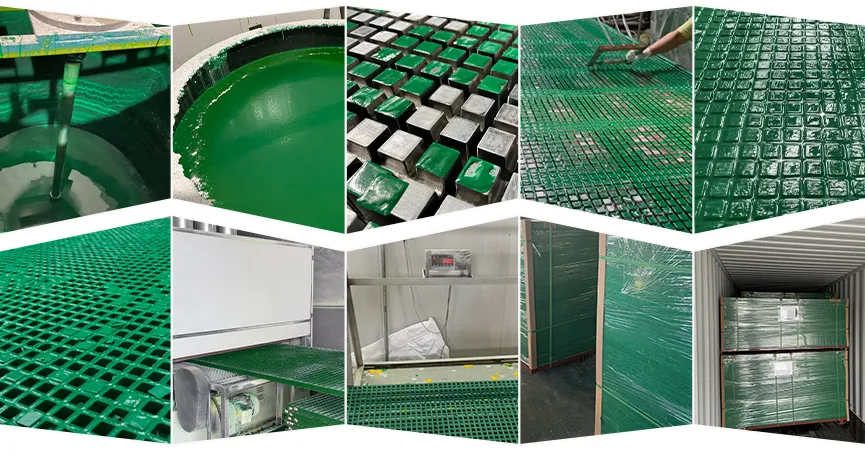loading...
- No. 9, Xingyuan South Street, Dongwaihuan Road, Zaoqiang County, Hengshui, Hebei, China
- admin@zjcomposites.com
- +86 15097380338
- Welcome to visit our website!
frp structural sections
Understanding FRP Structural Sections Innovations in Materials and Design
Fiber Reinforced Polymer (FRP) structural sections have emerged as a revolutionary advancement in the construction and engineering industries. These materials, which combine polymers with fibrous reinforcements like glass, carbon, or aramid fibers, offer unique properties that address some of the inherent limitations of traditional construction materials such as steel and concrete. The utilization of FRP in structural sections is transforming how engineers and architects approach design, construction, and sustainability.
Properties and Advantages of FRP
One of the most notable characteristics of FRP materials is their high strength-to-weight ratio. This advantage allows for lighter structural sections, leading to reduced material usage and lower transportation costs. Additionally, the corrosion resistance of FRP makes it particularly suitable for harsh environments, including coastal areas and chemical plants where traditional materials might degrade over time. The longevity of FRP can yield significant cost savings over the lifecycle of a structure, as maintenance and replacement costs are minimized.
Another significant advantage is the versatility in design. FRP can be molded into complex shapes that would be either difficult or impossible to achieve with conventional materials. This flexibility allows architects to explore innovative designs that not only enhance aesthetic appeal but also optimize structural performance. Moreover, FRP sections can be pre-fabricated off-site, leading to faster construction times and reduced labor costs on the job site.
Applications of FRP Structural Sections
FRP structural sections have found applications across various fields, including bridges, buildings, and infrastructure projects. In bridge construction, FRP is used for decks and girders, reducing the overall load on supporting structures and extending the lifespan of these critical assets. In buildings, FRP is increasingly adopted in areas such as facades, staircases, and even reinforcing elements in existing structures to improve performance.
The aviation and automotive industries also benefit from the unique properties of FRP. In aviation, lightweight and strong composites are essential for improving fuel efficiency and performance. Similarly, the automotive sector utilizes FRP sections to reduce vehicle weight while maintaining strength and safety standards.
Structural Design Considerations
frp structural sections

When incorporating FRP structural sections into designs, engineers must consider several factors. First, the isotropic properties of traditional materials differ significantly from the anisotropic properties of FRP. This difference impacts the way load distribution and stress concentrations are handled. Thus, detailed analysis and understanding of the material's mechanical behavior are essential during the design phase.
Additionally, while FRP is immune to corrosion, it is susceptible to UV degradation. Designers must take protective measures when FRP is used in exposed environments—this could include the application of protective coatings or integration into less exposed structural assemblies.
Sustainability Implications
The environmental implications of utilizing FRP structural sections are significant. The production of FRP materials generally has a lower carbon footprint compared to traditional materials like steel, which requires extensive energy input for extraction and processing. Moreover, the longevity and reduced maintenance needs of FRP structures contribute to sustainability in construction practices, aligning with global efforts to reduce waste and carbon emissions.
Challenges and Future Directions
Despite the numerous advantages, the adoption of FRP structural sections is not without challenges. These include higher initial costs compared to conventional materials, limited available standardized products, and a lack of familiarity among engineers and builders. Overcoming these hurdles will require ongoing research, education, and the development of standardized design codes and guidelines specific to FRP applications.
Looking ahead, the future of FRP structural sections appears promising. Advances in manufacturing processes, including automation and 3D printing, could reduce costs and improve the integration of FRP into broader construction practices. Furthermore, ongoing research in hybrid materials, combining FRP with other sustainable materials, could lead to even greater enhancements in performance and sustainability.
Conclusion
In summary, FRP structural sections represent a significant advancement in material science and engineering. Their extraordinary properties, range of applications, and potential for sustainability underline their growing importance in modern construction. As the industry continues to evolve, embracing innovations like FRP will be crucial in addressing contemporary challenges while paving the way for a more sustainable future. Through continued development and education, the potential of FRP can be fully realized, reshaping the landscapes of architecture and civil engineering.
-
GRP Structures: The Future of Lightweight, High-Performance EngineeringNewsJun.20,2025
-
FRP Water Tank: High-Performance Storage for Corrosive and Clean Water SystemsNewsJun.20,2025
-
FRP Square Tube: The New Industry Standard for Chemical and Structural ApplicationsNewsJun.20,2025
-
FRP Pultruded Profiles: The Ultimate Choice for Lightweight Structural StrengthNewsJun.20,2025
-
FRP Handrails: The Safer, Smarter, and Stronger Choice for Modern InfrastructureNewsJun.20,2025
-
FRP Grating: The Smart Solution for Durable, Lightweight Industrial FlooringNewsJun.20,2025
-
Why Choose a Galvanized Water Tank for Your Storage NeedsNewsMay.21,2025
